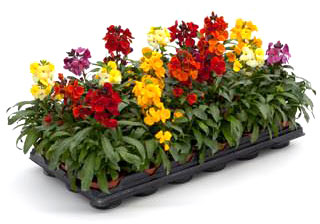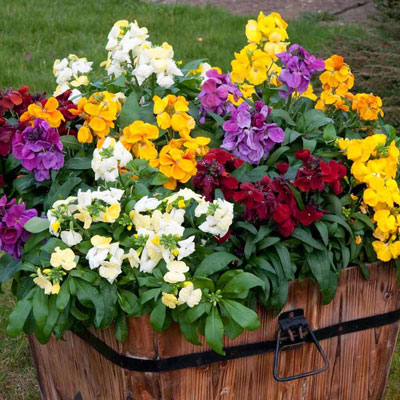Sugar Rush of a Wallflower

After I heard my friend Steve Huddleston of the Fort Worth Botanic Garden do shoutouts to this plant two weeks in a row, I decided to echo his sentiments.
Steve does his Fort Worth Botanic Garden segment on my radio program on WBAP each Sunday morning at 8:06, and he’s been talking about this great little plant and how they’ve used it in various places in their gardens.

Here are Steve’s words from this past Sunday’s report:
“Cheiranthus ‘Sugar Rush’ series (Cheiranthus cheiri). Common name is wallflower. A winter and spring annual for us.
Dense clumps of green foliage 10-12 inches tall and 8 inches wide.
Sweetly scented flowers in dark red, orange, gold, primrose yellow, and purple.
Buy all of one color or mix the colors.
On warm winter days, honeybees will be all over these flowers.
The colors combine beautifully with red, orange, primrose, or yellow pansies.
Cheiranthus, as opposed to snapdragons, will bloom all winter and into spring.
The fragrance is absolutely delightful.
Plant in beds or containers in full sun and in well-drained soil that is allowed to dry out a little before watering again.”

So, credit to Steve for the inspiration to feature the plant this week. And credit to Syngenta plants for their fine introduction. Heretofore, wallflowers have typically been very minor cool-season crops in shades of yellow and orange. Now we have something much more exciting to add to our containers and gardens.
I have to admit that I’ve not been out in garden centers as much the past couple of months as I might have wanted. However, if you see this one out there for sale, you might want to grab up a few and give them a try.
Photo credits: Main page photo is from Wonder Plants of the UK. I have also used it on this page. The container photo is from Zen Gardens (in a foreign language I don’t speak). The bedding plant photo is from the developer, Syngenta Plants of North America website.
